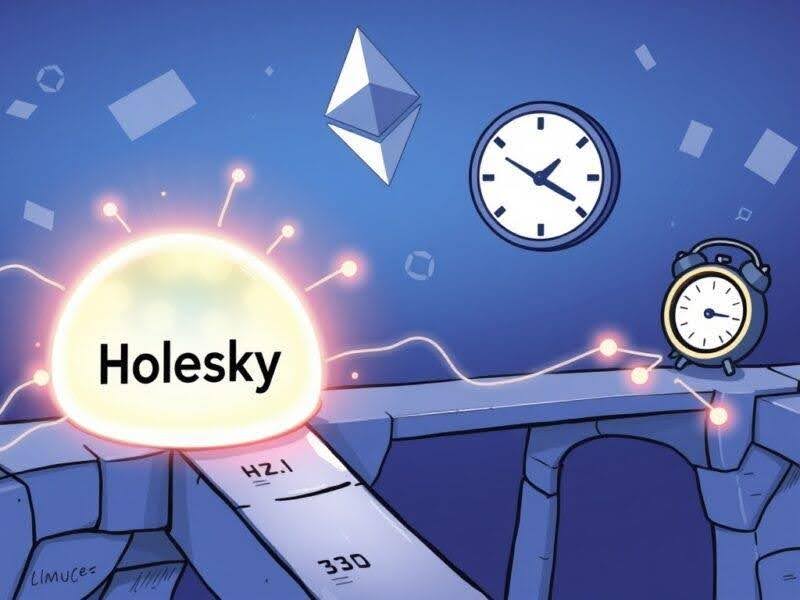Key Takeaways:
Ethereum is officially sunsetting its most ambitious Testnet, Holešky, marking a pivotal transition in its testing infrastructure. After nearly two years of enabling critical upgrades and scaling experiments, Holešky is being phased out in favor of more modular and specialized networks.

Launched in September 2023, Holešky was Ethereum’s largest public Testnet ever, purpose-built to simulate real-world staking conditions at massive scale. At its peak, it hosted over 1.6 million validators, dwarfing previous testnets like Goerli and Ropsten.
Holešky was particularly involved in testing upgrades including:
The same scale which had made Holešky so impressive turned, however, also against it.
Read More: Ethereum Rally Extends, With Solana and Emerging Projects Following
In early 2025, Holešky began showing signs of stress. After the activation of the Pectra upgrade, a wave of inactivity leaks hit the network. Thousands of validators went offline, creating a massive exit queue that took weeks to process.
This resulted in:
Even after technical recovery, the network had turned into an operating bottleneck. It was no longer able to deliver the testing agility necessary to support the fast-paced Ethereum roadmap.
Ethereum published Hoodi in March 2025 as an effort to correct the deficiencies of Holešky. It features:
Hoodi is created on a merged-from-genesis model that has a more maintainable infrastructure and fewer historical bugs.
Chainstack and Infura, and other large infra providers, already moved their tooling to use Hoodi.
Ethereum is now running a smaller set of three testnets that are optimized to fulfill specific functions:
| Testnet | Purpose |
| Sepolia | Smart contract & dApp development |
| Hoodi | Validator & staking infrastructure testing |
| Ephemery | Lightweight, reset-every-28-days validator lifecycle testing |
This segmentation improves reliability and ensures that testnets align with developer needs, instead of trying to serve all purposes with a single network.
The Fusaka upgrade, Ethereum’s next major hard fork is slated to activate on Holešky in mid-to-late September 2025. Two weeks after it finalizes, all remaining validator nodes on Holešky will be shut down.
After this, “Holešky will no longer be supported by client, testing or infrastructure teams,” said the Ethereum Foundation in a blog post.
Fusaka introduces several enhancements including:
It comprises 11 Ethereum Improvement Proposals (EIPs) and is the catalyst to the next stage of Ethereum growth.

Holešky closure is not only a closure, but it represents the overall Ethereum strategy of evolution. In 2025 and further, it becomes clear:
Looking forward Ethereum is targeting the Glamsterdam upgrade in 2026 which proposes to:
These moves are aimed squarely at improving user experience and scalability, especially for rollups – a critical component of Ethereum’s layer-2 ecosystem.
Read More: $291 Million Pulled from Bitcoin, Ethereum ETFs as Inflation Spikes Under Trump Tariffs
At the point of writing, ETH trades at approximately $4,395 and continues its recent streak, occasioned by ETF enthusiasm and growth in institutional buying.
With Holešky’s chapter closing, Ethereum is entering a phase of precision engineering, replacing “big and bulky” with lean and purpose-built.
The post Ethereum to Shut Down Holešky, Its Largest Testnet Ever appeared first on CryptoNinjas.
Also read: Acurast Launches ‘Staked Compute’ to Challenge AWS, Azure and Google Cloud with Decentralized Smartphone Network.